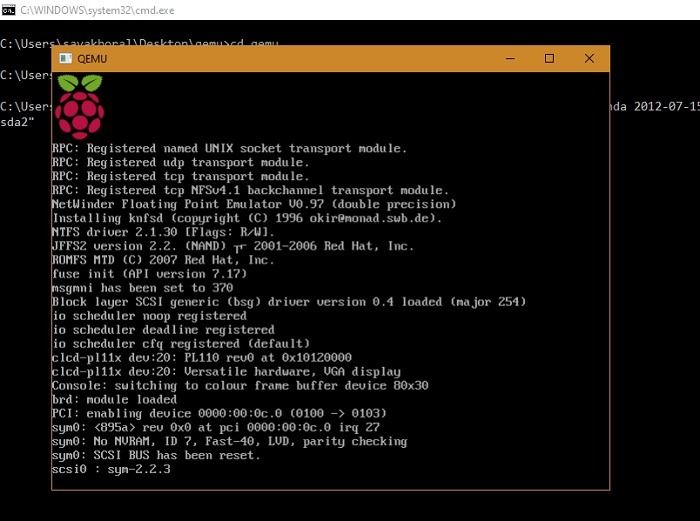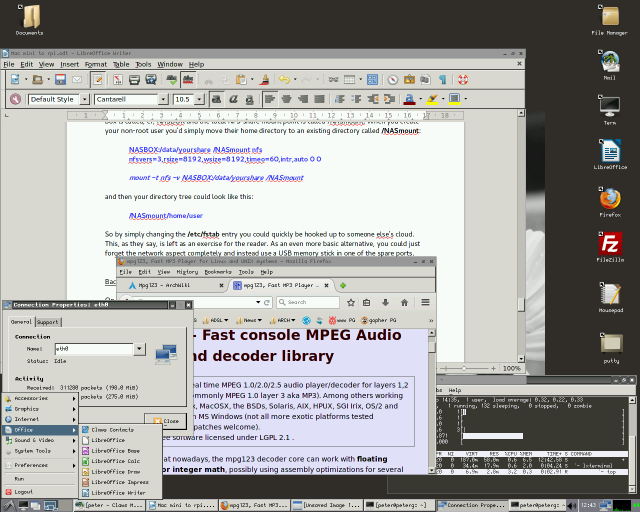

- #RASPBERRY PI MAC EMULATOR WITH INTERNET SOFTWARE#
- #RASPBERRY PI MAC EMULATOR WITH INTERNET CODE#
- #RASPBERRY PI MAC EMULATOR WITH INTERNET OFFLINE#
A key factor for building robust apps is to simulate poor network conditions to make testing more accessible to developers. It turns out, “it works on my Wi-Fi” doesn’t mean “it works on every mobile network,” as connectivity can vary significantly.
#RASPBERRY PI MAC EMULATOR WITH INTERNET OFFLINE#
The result? Apps that work well both offline and online (in good network conditions) but perform poorly under bad connectivity, sometimes to the point of complete unusability. online, applications are often designed to only function with these two states.

And there's switching between all these network conditions while the app runs. There's lie-fi, GPRS, 2G, EDGE, 3G, 4G, 5G, and Wi-Fi.

But these two extremes don't cover the whole gradient required to simulate slow network conditions. Testing for offline and online behavior is as easy as turning on or off the phone's airplane mode. This means writing apps that behave well when there's no connectivity and act even better when there is.
#RASPBERRY PI MAC EMULATOR WITH INTERNET SOFTWARE#
Good developers write software with the offline first motto in mind. In the mobile world, there's another dimension to this problem: “It works on my Wi-Fi!”īesides all the different devices developers have to consider, it is also essential to bear in mind the need to simulate slow connection conditions for apps that rely on network access. These are usually enough to test and make apps work almost everywhere. It's often not practical to acquire many phones for testing, so developers can also rely on services, such as Amazon Web Services (AWS) Device Farm or Xamarin Test Cloud. This is why they test a few devices they can get their hands on and - fingers crossed - hope for the best on all the others. If it works in these, it should work in everything in the middle, right?Īndroid developers, on the other hand, know that there are just too many devices. Developers for iOS know they should try their apps on both low and high-end models. There isn't a good excuse not to test your application on as many devices as possible. You can just hear that little voice: “It works on my device!” When developing mobile apps, this weird phenomenon can also occur. The second alternative might seem strange, but it was very common in the Web’s early days when websites were optimized for Microsoft Internet Explorer 5.5 in an 800圆00 screen resolution.

Testing it under as many conditions as possible and hope for the best.There are only two ways for a developer to create software that works on other machines: Something along the lines of “Test it, so you don’t regret it.” But let’s begin at the root of the problem: software. The developer is clueless about the cause of failure. “But it works on my machine!”Īs layers of complexity are added to this problem - think mobile apps and shaky Internet connections - the plot thickens. The functionality then breaks in the co-workers’ machines, the build system, or the customers' hands.
#RASPBERRY PI MAC EMULATOR WITH INTERNET CODE#
Translation: a developer didn't bother to test the code elsewhere or forgot to simulate slow network conditions and simply assumed it would work everywhere. There's a famous line in software development: “It works on my machine!”


 0 kommentar(er)
0 kommentar(er)
